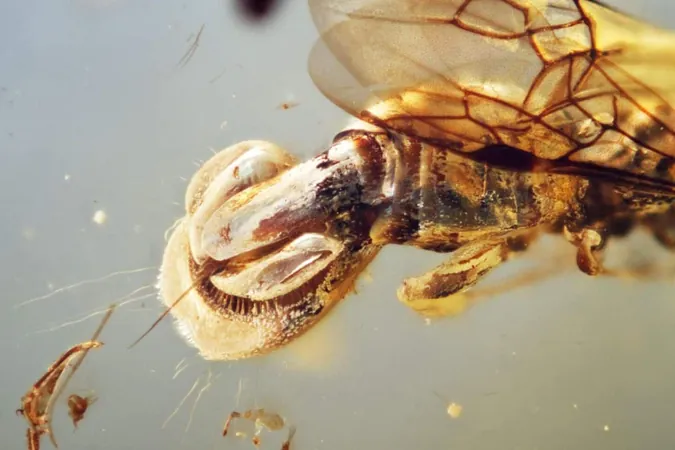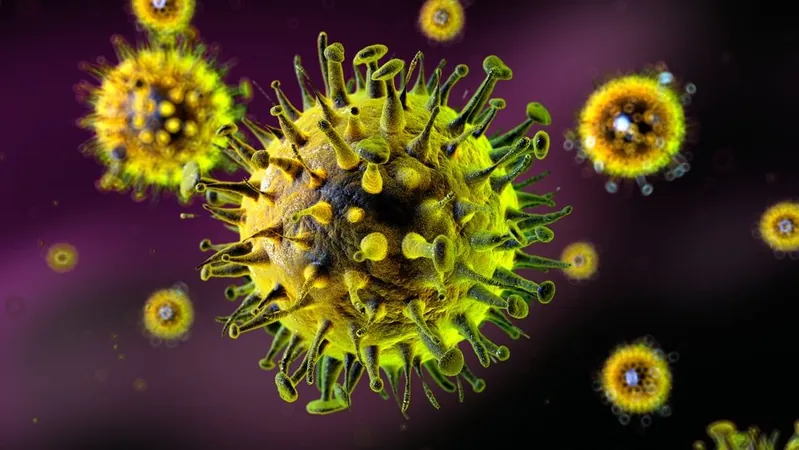
99-Million-Year-Old Amber Unearths an Incredible Wasp with a Venus Flytrap-Like Abdomen!
2025-03-28
Author: Ting
A Marvel of Ancient Evolution
Trapped for 99 million years in Kachin amber from modern-day Myanmar, the wasp has been classified as a completely new species and family—dubbed Sirenobethylus charybdis. Researchers managed to analyze sixteen exceptionally preserved female specimens, revealing an unprecedented anatomy that has raised eyebrows among scientists.
While the front half of the wasp resembles contemporary wasps, its posterior presents an entirely different narrative. Instead of tapering into a typical stinger or ovipositor, Sirenobethylus features a rounded, paddle-like abdomen, complete with bristly hairs and its striking resemblance to the carnivorous plant, Dionaea muscipula, commonly known as the Venus flytrap.
Lead researcher Qiong Wu, from Capital Normal University in Beijing, notes, “Nothing similar is known from any other insect,” underscoring the rarity of this discovery.
A Unique Hunting Strategy
Modern wasps are often classified as koinobiont parasites, laying eggs inside living hosts where their larvae consume the host from within. Sirenobethylus charybdis seems to be excellently equipped for this deadly survival tactic. Researchers propose that the wasp’s flytrap-like abdomen played a crucial role in capturing and immobilizing its prey, likely swift-moving insects, allowing for egg-laying via a central ovipositor.
This adaptation may have afforded Sirenobethylus a far wider range of potential host targets compared to many contemporary parasitic wasps that typically favor slower, sedentary victims like caterpillars.
Amber Fossils: More Than Meets the Eye
The amber fossils capture not just anatomical features but suggest real-time dynamics—where the wasps appear to be preserved in motion. The specimens exhibit variations in the positions of their abdominal traps, indicating an active predatory behavior.
Visual representations from the study provide lateral and dorsal views of these dynamic poses, alongside intricate details of the ovipositor, which is crucial for egg-laying.
An Ambush Predator Ahead of Its Time
Unlike modern dryinid wasps, which actively pursue their prey, Sirenobethylus seems to have adopted a passive ambush strategy. The design of its abdomen appears to act as an ambush mechanism rather than a pursuit tool. According to the authors, “We imagine it would have waited with the apparatus open, ready to pounce as soon as a potential host activated the capture response,” capitalizing on the element of surprise.
The wasp’s abdomen is equipped with trigger hairs that could function as sensory tripwires, allowing it to react instantly whenever potential prey triggered a response.
Missing Males: Unraveling the Mystery
Intriguingly, all known specimens of Sirenobethylus charybdis are female, raising questions about the role of the unique abdominal structure. Should male specimens be discovered lacking this extraordinary apparatus, it may indicate that the flytrap feature serves a solely reproductive purpose. “It would indeed be unique for insect females to restrain males during mating, rather than the other way around,” the researchers clarify, making it essential to understand the full implications of this species’ biology.
As scientists continue to explore the evolutionary narratives embedded in these amber specimens, the Sirenobethylus charybdis showcases the mysteries of life that once thrived on Earth millions of years ago. What else might be hidden in the depths of amber, waiting to revolutionize our understanding of insect evolution? Stay tuned for further discoveries!



 Brasil (PT)
Brasil (PT)
 Canada (EN)
Canada (EN)
 Chile (ES)
Chile (ES)
 Česko (CS)
Česko (CS)
 대한민국 (KO)
대한민국 (KO)
 España (ES)
España (ES)
 France (FR)
France (FR)
 Hong Kong (EN)
Hong Kong (EN)
 Italia (IT)
Italia (IT)
 日本 (JA)
日本 (JA)
 Magyarország (HU)
Magyarország (HU)
 Norge (NO)
Norge (NO)
 Polska (PL)
Polska (PL)
 Schweiz (DE)
Schweiz (DE)
 Singapore (EN)
Singapore (EN)
 Sverige (SV)
Sverige (SV)
 Suomi (FI)
Suomi (FI)
 Türkiye (TR)
Türkiye (TR)
 الإمارات العربية المتحدة (AR)
الإمارات العربية المتحدة (AR)